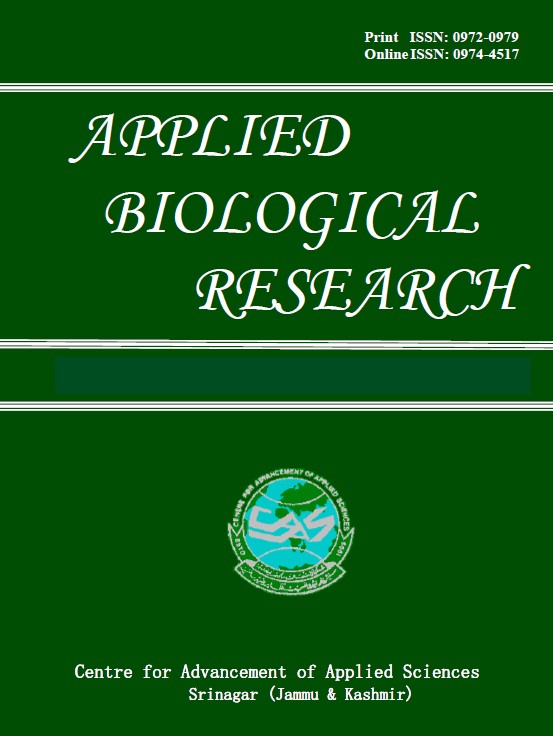BIOLOGICAL ACTIVITY AND ALKALOID COMPOSITION OF Chelidonium majus L. GROWING AT THREE SITES IN THE EASTERN PART OF KUNGEY ALATAU RIDGE (KAZAKHSTAN)
DOI:
https://doi.org/10.48165/abr.2025.27.01.8Keywords:
Alkaloids, antioxidant, antimicrobial activity, Chelidonium majus, GC-MSAbstract
Chelidonium majus L. (family Papaveraceae), widely known as greater celandine, is a valuable plant used in traditional medicine. The present study was aimed to compare the antioxidant and antimicrobial activities, as well as the alkaloid composition in different parts of C. majus collected from various locations in Kungei-Alatau region of Kazakhstan. The amount of total phenolic compounds and the antioxidant capability were determined by using Folin-Ciocalteu phenol reagent, radical (DPPH and ABTS) scavenging, and metal ion reducing (PFRAP) assays. Antimicrobial activity was evaluated by agar disc diffusion technique. The alkaloid composition was characterized by GC-MS. The root samples yielded the highest antioxidant and antimicrobial activity compared to the aerial parts. The root extracts yielded highest scavenging activity in DPPH (1745.37 ± 1.9 μmol TE mL⁻¹), ABTS (917.97 ±10.43 μmol TE mL⁻¹), and PFRAP value (18.93 ± 0.14 mmol AAE mL⁻¹) as well as exhibited highest phenolic content (2617.62 ±5.53 μg GAE mL⁻¹). The root extracts also showed largest inhibition zone (33.0 ±0.82 mm) against Bacillus subtilis. A total of 26 alkaloids, including chelidonine, demethylchelerythrine, dihydro-chelerythrine, dihydrochelirubine, and dihydrosanguinarine, were identified. The results indicated that the roots of C. majus possess more biologically active component than its other plant parts.Downloads
Download data is not yet available.
References
Insert references here in the same format as previous examples
Example Reference 1. 2025. Title of the reference. Journal Name, Volume(Issue): Page range.
Downloads
Published
2025-04-20
Issue
Section
Article
How to Cite
BIOLOGICAL ACTIVITY AND ALKALOID COMPOSITION OF Chelidonium majus L. GROWING AT THREE SITES IN THE EASTERN PART OF KUNGEY ALATAU RIDGE (KAZAKHSTAN). (2025). Applied Biological Research, 27(1), 80-93. https://doi.org/10.48165/abr.2025.27.01.8

